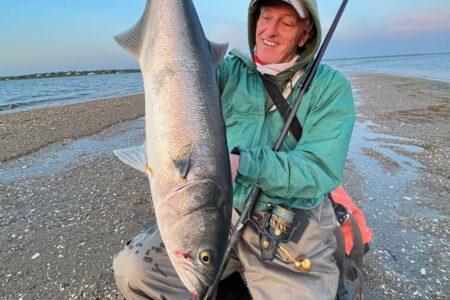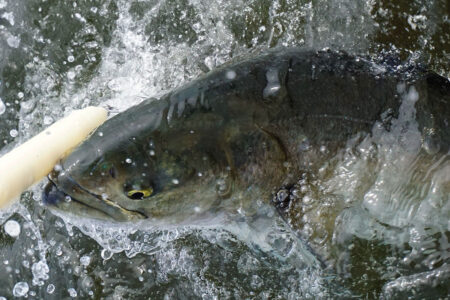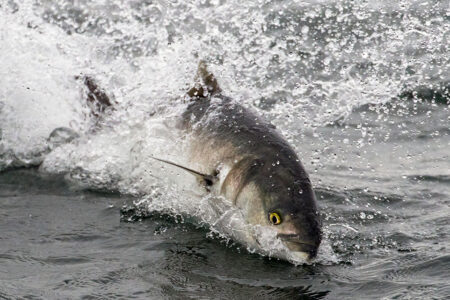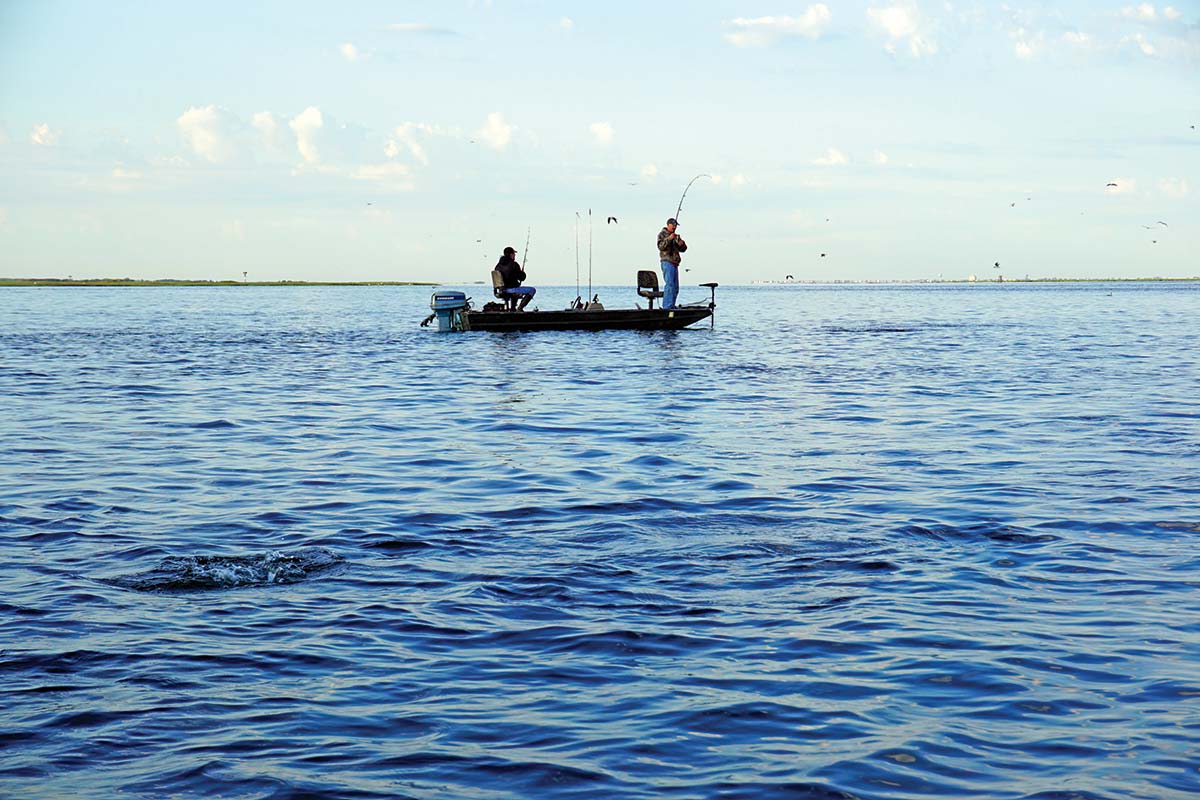
This phenomenon typically starts to take place towards the end of April and during the month of May.
If you ever go to a back harbor, estuary, or marsh-type location during the time of the year when bluefish are known to prowl the area, start to look closely. You will begin to notice things you may not have before, especially on those quiet, glassy days. They often look like blades of grass within a marsh sticking out of the water, but if you look even closer and fixate on those “blades” you will notice they’re moving — sometimes all in unison, like a pack.
Before too long you’ll realize that those blades of grass happen to be finning bluefish moseying along in a quiet back bay setting, not feeding or acting in any sort of aggressive manner. But they’re there!
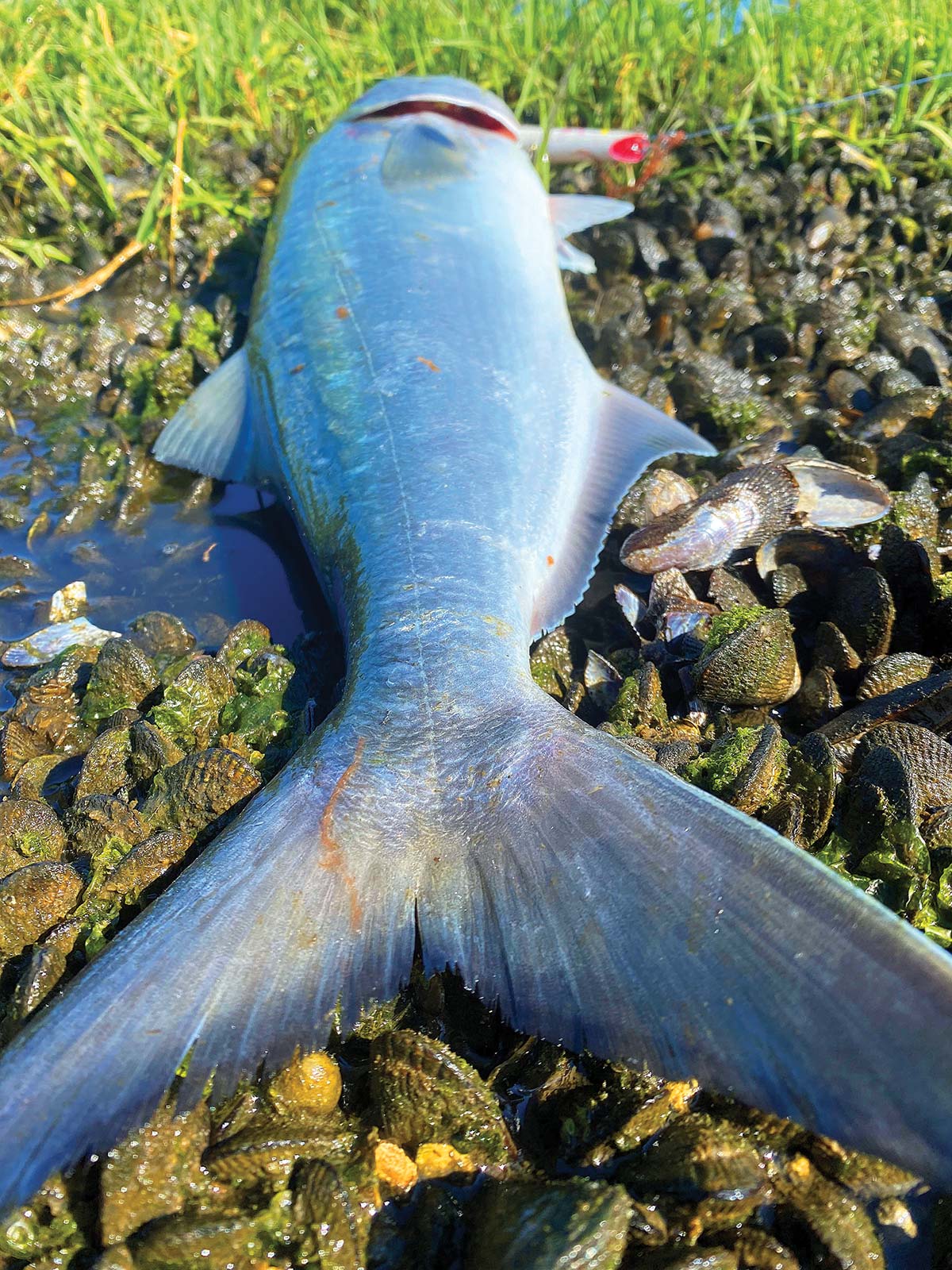
When & Where
This phenomenon typically starts to occur towards the end of April and into May, and depending on location it may extend through the summer months. Usually, the “racer” or first bluefish invade the area. These fish are typically thin with big heads and chase bait right into the bays and backwaters. Right afterward, more fish follow and start to settle into the backwaters, pretty much foraging on anything they can find and causing all-out panic in the marine ecosystem. Menhaden are the usual prime meal for these bluefish this time of the year, though, since they are numerous and can be found in just about any body of water.
I’ve personally seen bluefish behaving in this manor in bays, harbors, off docks and piers, marshes, and even in the middle of a huge body of water, over 100 feet deep. The common denominator between all of these places is that when able to be seen, they’re always given away by that telltale “blade of grass” or small black points breaking the surface of the water, moving ever so slowly in unison.
Tide does play a factor, but only in those areas that are shallow to begin with. Usually, in these types of spots, this activity occurs during the top of the flood tide when water is pushing into these back areas. I’d like to attribute this to the bait coming in with the tide, but I’ve sometimes noticed that the fish are present without the bait directly in front of them as well. Out in the deep water bays and sounds the tide for this type of fishing didn’t make much of an impact on whether the fish were present or not.
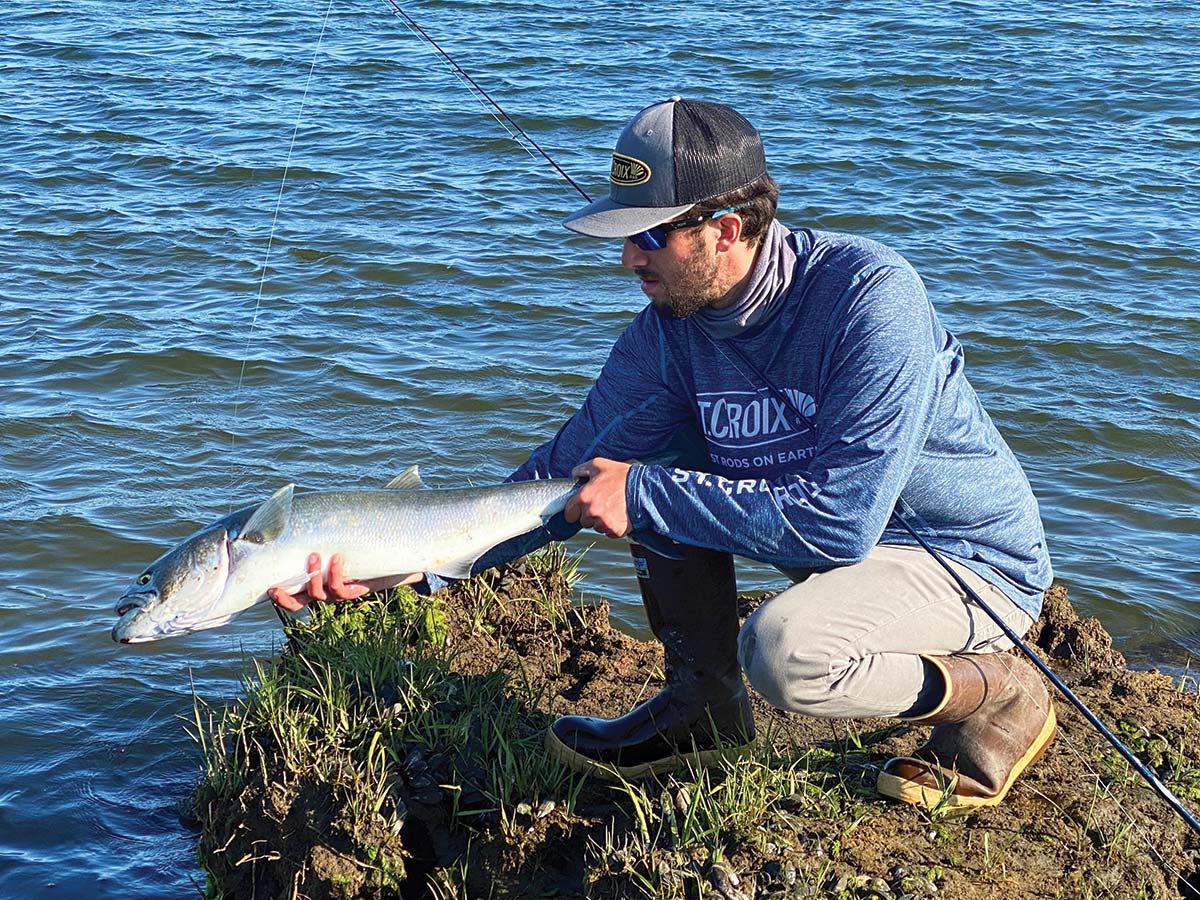
A Bit Picky
The usual thought with bluefish tends to be that they’re not picky in the slightest bit when it comes to offerings. At times this can be true, but what I’ve come to realize when I started fishing for these finning fish is that they actually can be quite selective with what they choose to go after. Many times, I’ve identified the fins of the fish and cast my lure across them in a strategic way to make sure I didn’t spook them initially.
And speaking of spooking, don’t cast right into the herd of fins because the splash of a lure landing among these non-aggressive fish tends to spook them off into different directions, and then you’ll have to wait a bit before they form up again or just try and find another school. Regardless, even with proper lure placement, I noticed that the blues were not jumping all over it as they do in their normal bluefish-like fashion. These fish were quite random in how they would decide whether they would go after a lure. And even when I would get a few followers, it would not be the entire pack either. Only one of two would break off and look at what was happening.
The pickiness of these fish definitely gained my interest. Usually, when the blues do come to town, it’s a sure bet for an explosion once I know where they are and I place a lure in their path. These fish were not in a feeding mood or actively chasing. This had been the case many times with the ones that are finning.
With a little bit of time and a few plug changes, I finally got a few of the fish to swipe on my lure. It seemed that switching a pencil popper got the interest of the fish that seemed uninterested beforehand. Both the Savage and Cotton Cordell Pencil Poppers were doing the job. I also outfitted the lures with single inline hooks to make unhooking them an easier task for me and do less damage to the fish in the process.
The Tsunami Talking Popper fished like a pencil popper also proved itself to be another worthy fish-calling lure during this trial and error period. The thing all these lures did have in common was that they all threw a great amount of water when worked. They could also be worked in a slow or fast manner depending on what the fish wanted on a particular day, meaning you could fine-tune your presentation and adjust it to the fish’s body language once they saw the lure in their vicinity.
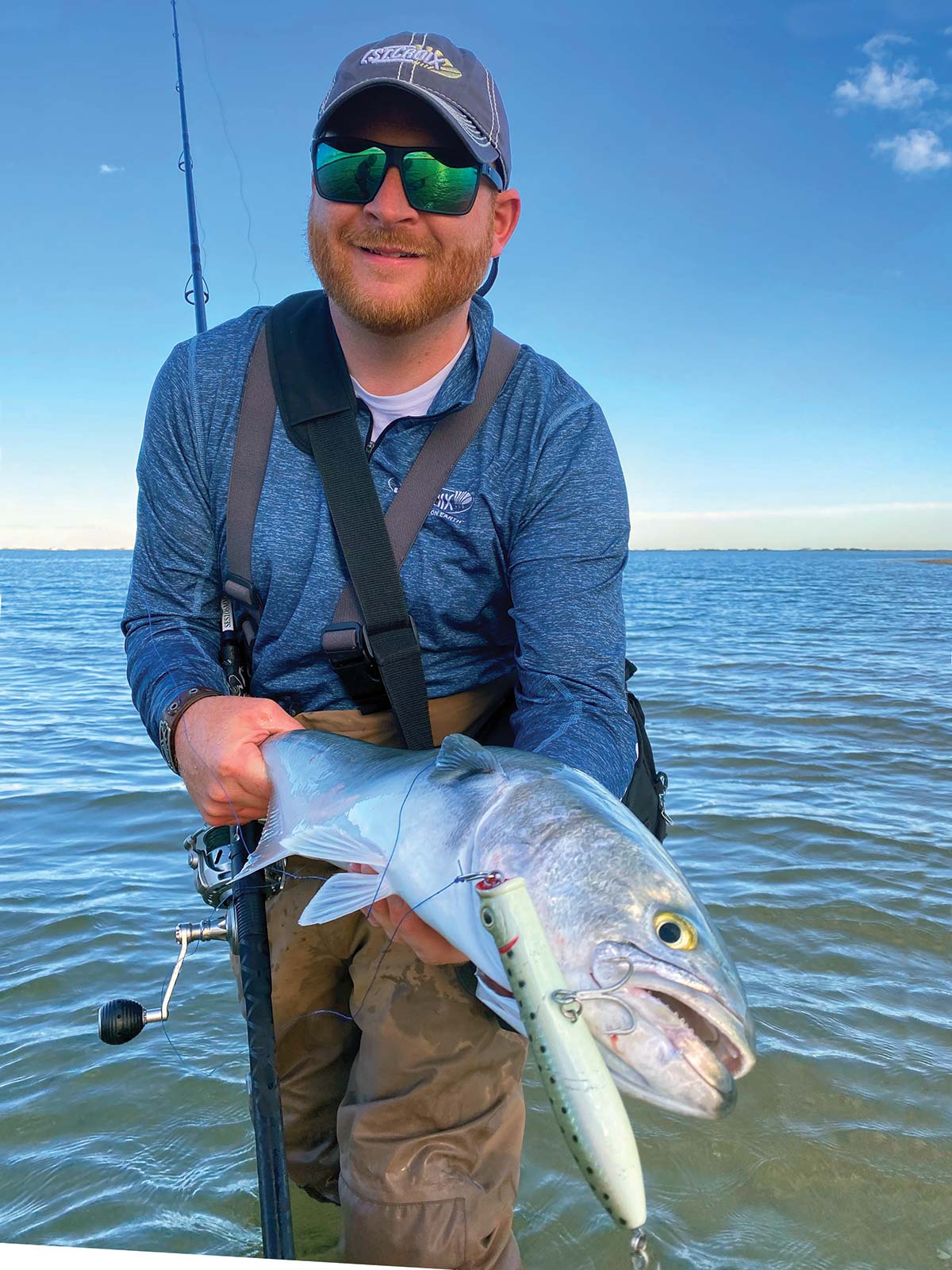
But Why?
After seeing this behavior in my local backwaters for years and not questioning why it’s happening, I actually had a conversation about this with another Fisherman writer, Marc Sedotti, and we both shared very similar occurrences in both the deep water and shallow backwaters. Marc was able to offer me a further explanation in which he basically told me the reason these fish behave in this manner is not because of some sort of spawning activity but because of the digestive process for a bluefish. You see, that bunker school that was not necessarily visible, nor was getting harassed by those bluefish. But, before my arrival, they were actually taking a beating, and those bluefish that were showing their fins were in the process of digesting that prior meal in the warm, sunny water.
It also explains further why these fish were not the most enthusiastic about my lure but were more “annoyed” at it passing by. How would you feel if you ate yourself into a food coma after Thanksgiving dinner and someone kept making loud noises and commotion around you afterward?
One of the more recent places I fished for these fish off my boat was in the middle of the Long Island Sound. I actually came across them mistakenly while looking for large stripers feeding on bunker pods in over 100 feet of water. On a flat day, I cruised, looking for visible signs of menhaden on top of the water and my fishfinder. I started noticing that I was scattering some fish as I drove the boat by. The advantage I had again was that it was so calm out that I could have seen a ripple from miles away. At first, I thought maybe bunker? So I stopped the boat, hopped up on the bow, and quickly realized with a pair of polarized sunglasses that these were all bluefish finning on top. It also seemed that the farther north I headed, the more I came across; it was quite the sight. The above tactics worked on these fish, and I do have to mention they were big too. Some of the fish I landed on that day were in excess of 15 pounds after spitting up a couple of bunker too.
I was reeling in a particular fish, and with the polarized sunglasses, I could see a bass over 40 pounds behind the blue, about 10 feet under my boat. This was the fish I initially set out for, but of course, my discovery took precedence over the striper fishing. Surprisingly I was not able to find one menhaden school that day for whatever reason, but I did find thousands of blues — a fascinating sight.
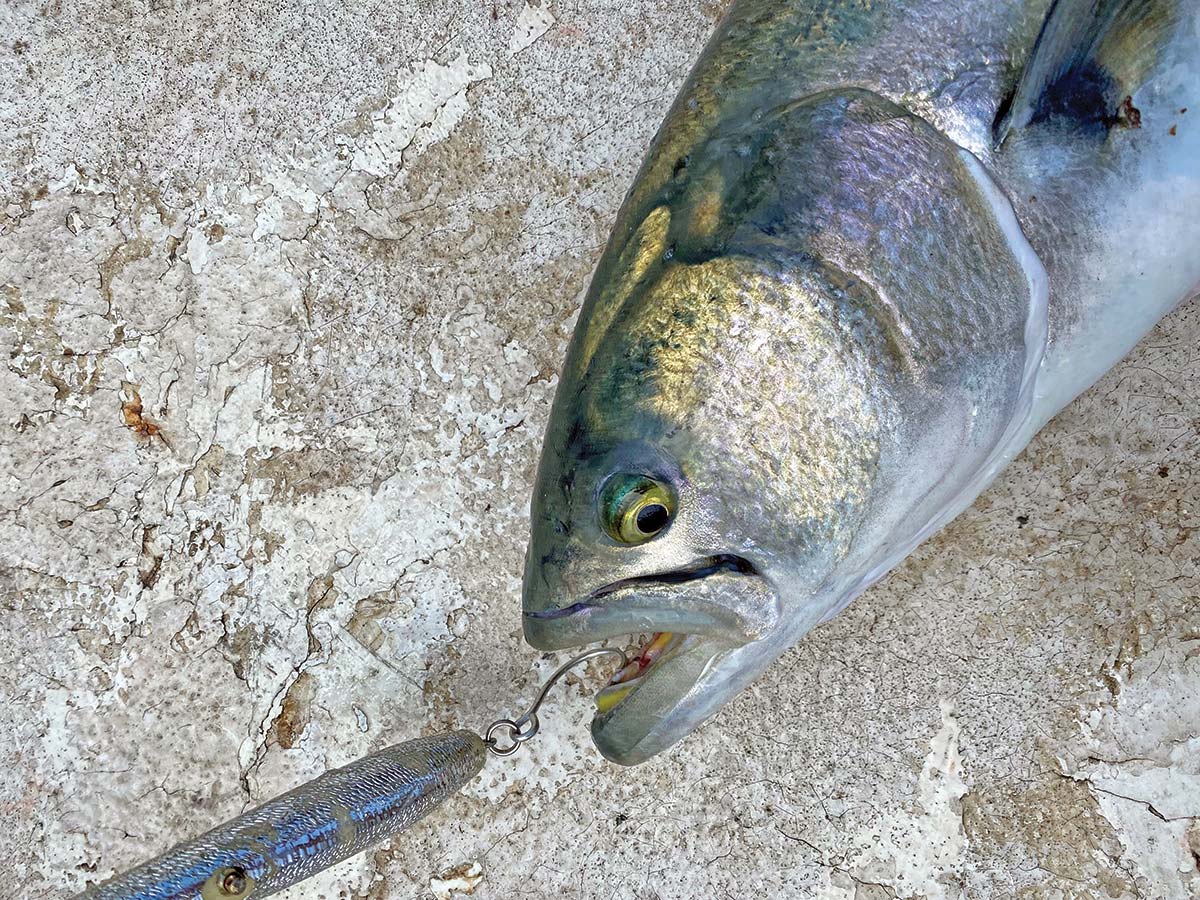
Properly Outfitted
Despite the fact that these fish are not initially aggressive, we can’t forget that they’re bluefish, and once hooked, they will fight just as aggressively as any other bluefish would. Suffice to say proper equipment is a must.
| REMEMBER THOSE GIVEAWAYS |
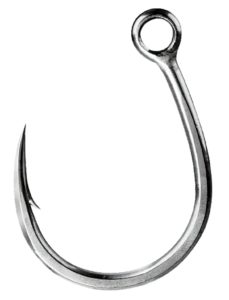 If you visited The Fisherman booth at any of the events throughout the region over the winter, you might have noticed that one of the options were the Lone-Diablo Hooks from BKK. If you did end up grabbing those hooks for signing up, keep in mind they are a perfect swap onto any of the plugs mentioned in this feature in place of treble hooks. Take it from me, treble hooks can be a great inconvenience! – M. Broderick If you visited The Fisherman booth at any of the events throughout the region over the winter, you might have noticed that one of the options were the Lone-Diablo Hooks from BKK. If you did end up grabbing those hooks for signing up, keep in mind they are a perfect swap onto any of the plugs mentioned in this feature in place of treble hooks. Take it from me, treble hooks can be a great inconvenience! – M. Broderick |
If you find yourself in a surf fishing situation for these blues, a 9 or 10-foot moderate-action rod seems to fit the bit in most situations. Something that can sling up to 3 ounces and land one of these brutes in a proper amount of time. A 5000-sized spinning reel will pair perfectly with either the 9 or the 10-foot and 30-pound braid will round out the setup. Remember, the moderate action of the rod will allow you to work pencil poppers a lot easier too.
Off the boat, something from 7-1/2 to 8 feet with a 4000-sized reel and 30-pound braid is suitable. I actually was able to use some of the first versions of the Rift rods from St. Croix on these blues, and between the action and backbone, they did a heck of a job landing them in a short time.
Next time you approach one of these settings this spring that I described above, sit back for a second and observe the water in front of you. You will certainly be able to pick up marine ecology clues by watching the water. Any maybe if you’re in the right place at the right time, you’ll see those little black points swimming in unison, waiting to get duped by your offering.
